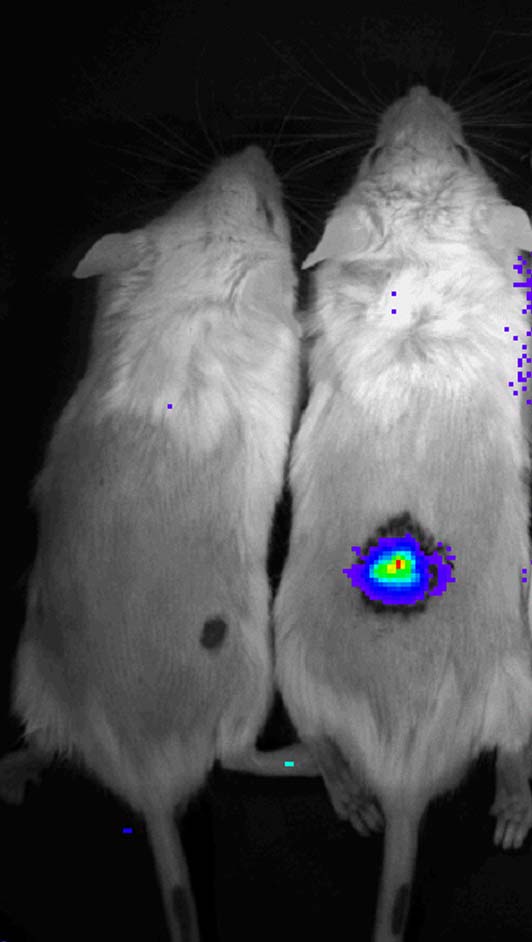16.0: Thursday, March 17, 2005
7705
InVivo Trafficking of Adipose-derived Multipotent Mesenchymal Cells to Cutaneous Wound Sites
Goals/Purpose: Stem cells have been found to play a critical role in orchestrating the healing process. Systemically administering adipose-derived multipotent mesenchymal cells (AdMMCs) may migrate to cutaneous wound sites of mice and facilitate wound healing.
Methods/Techniques: We examined in a mouse model, the trafficking of systemically administered adipose-derived multipotent mesenchymal cells using a novel in vivo molecular imaging technique. Genetically tagged AdMMCs expressing a bioluminescent reporter protein (luciferase) were systemically administered via tail vein into severe combined immunodeficient mice. Full-thickness punch biopsy wounds were made on the dorsum of the mice. At various time points, luciferin was injected, and in vivo bioluminescence imaging modality was performed to detect the trafficking pattern of the AdMMCs to wound injury sites.
Results/Complications: Systemically administered AdMMCs expressing the luciferase gene successfully migrated to skin wound sites in the mouse model. Focal luminescent emission was observed at cutaneous wound sites from 6 hours post injection through day 7. Temporal analysis demonstrated peak localization of these cells to cutaneous wounds occuring at day 3.
Conclusion: By demonstrating that systemically administered AdMMCs preferentially traffic to cutaneous wound sites, exploring the fate of these transplanted cells in vivo is important for understanding their relevance in wound healing. 
